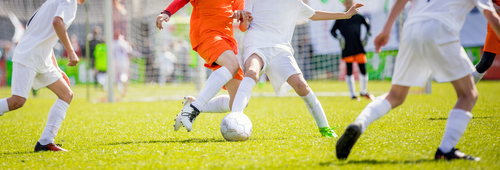 Every year high school athletes graduate and speculate on their future course by asking, “are small colleges a good choice for athletes?” The question revolves around a life-defining moment for the athlete. Large Division I schools beckon with fancy uniforms, extensive athletic facilities, and the promise of national exposure. The dreams of becoming a professional athlete and making millions briefly raise the spirits. Then the reality set in that only 1 percent of all college athletes put on a Division I uniform, and only 2 percent of those move on to the pros. The moment calls for self-reflection and the consideration of other factors that color an athlete’s final choice.
Every year high school athletes graduate and speculate on their future course by asking, “are small colleges a good choice for athletes?” The question revolves around a life-defining moment for the athlete. Large Division I schools beckon with fancy uniforms, extensive athletic facilities, and the promise of national exposure. The dreams of becoming a professional athlete and making millions briefly raise the spirits. Then the reality set in that only 1 percent of all college athletes put on a Division I uniform, and only 2 percent of those move on to the pros. The moment calls for self-reflection and the consideration of other factors that color an athlete’s final choice.
What Schools are Considered Small Colleges?
In general terms, small colleges are those who have an enrollment of 5,000 students or fewer. They have a faculty/student ratio of around 10:1. They do not generally offer graduate level degrees. Athletes at small colleges compete in either the NAIA or NCAA Division II or III level. Athletic contests are every bit as competitive as they are in NCAA Division I schools, but the athlete enjoys an environment that is not as demanding or as exposed as athletes in Division I programs. Both the NAIA and the NCAA Division II and III schools play in conferences established throughout the country and seek national championships every year.The Advantages of Attending a Small College
Other than the attraction of more individual attention in the classroom, other factors make a small college attractive to athletes. As pointed out by US News and World Report, all NCAA Division I schools are research universities. This means that professors are divided between teaching and research projects. This may also mean that the professor considers instruction to be a side project while their research takes center stage. Teaching assistants lecture classes that may be in the hundreds and grade papers and tests. The result is a distancing between the professor and the student. The student becomes a number rather than a person. Athletes who attend a small college also enjoy a more relaxed atmosphere. While the pressure-cooker environment of Division I sports may crush a student-athlete, the freedom to enjoy events outside the sports arena and classroom makes a small college an attractive option.Athletic Facilities at Small Colleges
Since the 1980s small colleges adopted the formula of building or upgrading sports facilities to attract more students. The effort recognized that college students are interested in pursuing athletic events, whether at the intercollegiate level or in inter-mural activities. Today, athletes at small colleges boast the same quality of sports facilities as those at Division I schools. Both the NAIA and NCAA Division II schools have facilities for over 25 sports for men and women to compete. The NAIA allows schools to offer athletic scholarships while NCAA Division I schools only offer academic scholarships along with need grants. At the time of decision between a large research university and a small college, the high school athlete is at a major crossroad in their lives. The choice of a small college should never be immediately rejected. The decision to choose a small school to continue an athletic career depends on the personal considerations of the athlete. Related Resources:- Does it Cost More to Attend a Small College?
- Is Financial Aid Available at Small Colleges?
- 5 Benefits of Attending a Small College
- The 30 Best, Most Beautiful Small Colleges in America
- 30 Best Bachelor’s in Psychology Degrees Online: Small Colleges
- 30 Great Small Colleges for a Teaching Degree
- 30 Great Small Colleges for STEM Degrees
